The Connection Between Indoor Air Quality and Drying
Indoor air quality (IAQ) is a topic of increasing concern for homeowners and businesses alike. We spend a significant portion of our lives indoors, and the air we breathe has a profound impact on our health and well-being. One often overlooked aspect of IAQ is its connection to water damage and the drying process.
Water damage, whether from leaks, floods, or other sources, can lead to a host of problems, including the growth of mold, mildew, and the deterioration of building materials. These issues not only compromise the structural integrity of a space but also pose significant health risks. In this blog post, we will explore the intricate relationship between IAQ and drying techniques. We will delve into how effective drying methods play a pivotal role in preventing mold growth, maintaining a healthy indoor environment, and ultimately, ensuring the well-being of those who inhabit the space. Understanding this connection is vital for homeowners and businesses seeking to create and maintain spaces with clean, breathable air.
The Impact of Water Damage on IAQ
Water damage, whether sudden and catastrophic or slow and insidious, is a potent catalyst for deteriorating indoor air quality (IAQ). Its repercussions can be far-reaching and detrimental to both the structural integrity of a building and the health of its occupants. Here, we delve into the profound impact of water damage on IAQ:
- Mold and Mildew Growth: When excess moisture permeates a building, it creates an ideal breeding ground for mold and mildew. These microscopic organisms release spores into the air, which, when inhaled, can lead to various respiratory issues, allergies, and even more severe health problems.
- Deterioration of Building Materials: Water’s destructive power knows no bounds. Over time, it can corrode and weaken building materials like wood, drywall, and insulation. As these materials degrade, they release particles and contaminants into the air, further compromising IAQ.
- Increased Humidity Levels: Water damage can elevate indoor humidity levels, making the environment uncomfortable and conducive to the proliferation of allergens and pathogens. High humidity not only triggers respiratory discomfort but can also damage personal belongings and furniture.
- Unpleasant Odors: Stagnant water, soaked materials, and microbial growth often produce musty, unpleasant odors. These odors can linger, making indoor spaces less inviting and comfortable.
- Exacerbation of Allergies and Asthma: For individuals with allergies or asthma, poor IAQ resulting from water damage can exacerbate their symptoms. Airborne allergens and irritants can trigger respiratory distress, leading to increased healthcare costs and reduced quality of life.
- Structural Damage: Beyond the health implications, water damage can weaken the structural integrity of a building. This poses not only financial burdens but also safety concerns for occupants.
- Hidden Hazards: Water damage isn’t always visible. It can lurk behind walls, beneath floors, or in ceilings, creating hidden IAQ problems that may go unnoticed until they become severe.
Understanding the repercussions of water damage on IAQ underscores the importance of swift and effective drying techniques. In the next section, we will explore how proper drying methods can mitigate these issues and contribute to healthier indoor environments.
The Role of Drying in Improving IAQ
In the battle to maintain excellent indoor air quality (IAQ), one often-underestimated hero emerges—the drying process. Adequate drying techniques play a pivotal role in preventing and rectifying the IAQ problems triggered by water damage. Let’s delve into the vital role that drying plays in enhancing IAQ:
- Mold and Mildew Prevention: Swift and thorough drying is the most effective strategy for preventing mold and mildew growth. By eliminating excess moisture, drying inhibits the conditions necessary for these harmful microorganisms to flourish.
- Removal of Harmful Allergens: Drying not only eliminates visible water but also reduces the humidity levels that foster the presence of allergens like dust mites and mold. Lower humidity means a less hospitable environment for these irritants.
- Preservation of Indoor Air Balance: Efficient drying helps restore balance to the indoor environment by reducing excessive humidity. This equilibrium is vital for IAQ, as it discourages microbial growth and ensures a comfortable, healthful atmosphere.
- Preventing Structural Damage: Effective drying safeguards the structural integrity of a building. This is crucial not only for safety but also for maintaining a solid building envelope that prevents the infiltration of outdoor pollutants.
- Elimination of Unpleasant Odors: Drying not only removes water but also helps eliminate the musty odors often associated with water damage. A dry environment is less conducive to the growth of odor-causing microorganisms.
- Improving the Lifespan of Building Materials: By promptly removing excess moisture, drying helps extend the lifespan of building materials, reducing the release of particles and contaminants into the air.
- Enhancing Occupant Health and Comfort: A well-dried indoor space promotes the well-being and comfort of its occupants. Reduced allergens, mold, and mildew contribute to better respiratory health and a more pleasant living or working environment.
- Cost Savings: Investing in effective drying services can yield significant cost savings over time by preventing more extensive damage and the need for expensive remediation.
Understanding that drying is not just about water removal but also about restoring IAQ highlights its essential role in creating and maintaining a healthy indoor environment. In the following sections, we’ll explore key factors in achieving effective drying for IAQ and practical steps to ensure optimal outcomes.
Key Factors in Effective Drying for IAQ
To ensure that the drying process effectively enhances indoor air quality (IAQ), several critical factors come into play:
- Speedy Response: Time is of the essence when it comes to water damage. Swiftly addressing the issue and initiating the drying process can prevent further damage and reduce the risk of IAQ problems.
- Precise Moisture Detection: Utilizing advanced moisture detection equipment, such as infrared thermography or moisture meters, is crucial. These tools help identify hidden pockets of moisture, ensuring comprehensive drying.
- Proper Ventilation: Adequate ventilation is essential for expelling moisture-laden air from the indoor space. It promotes the exchange of indoor and outdoor air, aiding in the drying process.
- Humidity Control: Maintaining optimal humidity levels during the drying process is critical. Dehumidifiers can be employed to remove excess moisture from the air, speeding up drying and preventing further IAQ issues.
- Professional Expertise: Enlisting the services of experienced professionals ensures that drying is done effectively and efficiently. Experts understand the nuances of different building materials and can tailor drying techniques accordingly.
- Thorough Cleaning: Cleaning and sanitizing affected areas are essential steps in the drying process. This helps eliminate contaminants and ensures a clean slate for rebuilding and restoration.
Preventive Measures for Maintaining Good IAQ
Preventing water damage is the best way to maintain good IAQ. Consider these preventive measures:
- Regular Maintenance: Conduct routine inspections of plumbing, roofing, and building envelopes to catch potential issues before they become major problems.
- Weatherproofing: Properly seal windows, doors, and roofs to prevent water intrusion during storms and heavy rainfall.
- Proper Insulation: Insulate walls, attics, and crawl spaces to minimize the risk of condensation and moisture buildup.
- Drainage Maintenance: Ensure that gutters, downspouts, and drainage systems are clear and functioning correctly.
- Appliance Maintenance: Regularly inspect and maintain appliances like water heaters, washing machines, and dishwashers to prevent leaks.
Monitoring and Testing IAQ
Regularly monitoring and testing IAQ is a proactive approach to maintaining a healthy indoor environment:
- Air Quality Testing: Conduct periodic air quality tests to assess the levels of allergens, pollutants, and microbial contaminants in the indoor air.
- Mold Inspections: Schedule mold inspections to identify potential growth areas, especially in damp or humid locations.
- HVAC Maintenance: Ensure that heating, ventilation, and air conditioning (HVAC) systems are well-maintained and equipped with effective air filters.
Conclusion
The connection between indoor air quality and drying is undeniable. Water damage can have severe repercussions on IAQ, but with swift and efficient drying techniques, these issues can be mitigated. Proper moisture removal, along with preventive measures and regular IAQ monitoring, contributes to a healthy indoor environment where occupants can breathe easy and enjoy a high quality of life. Prioritizing the connection between drying and IAQ is essential for anyone concerned with the well-being of their indoor spaces.

